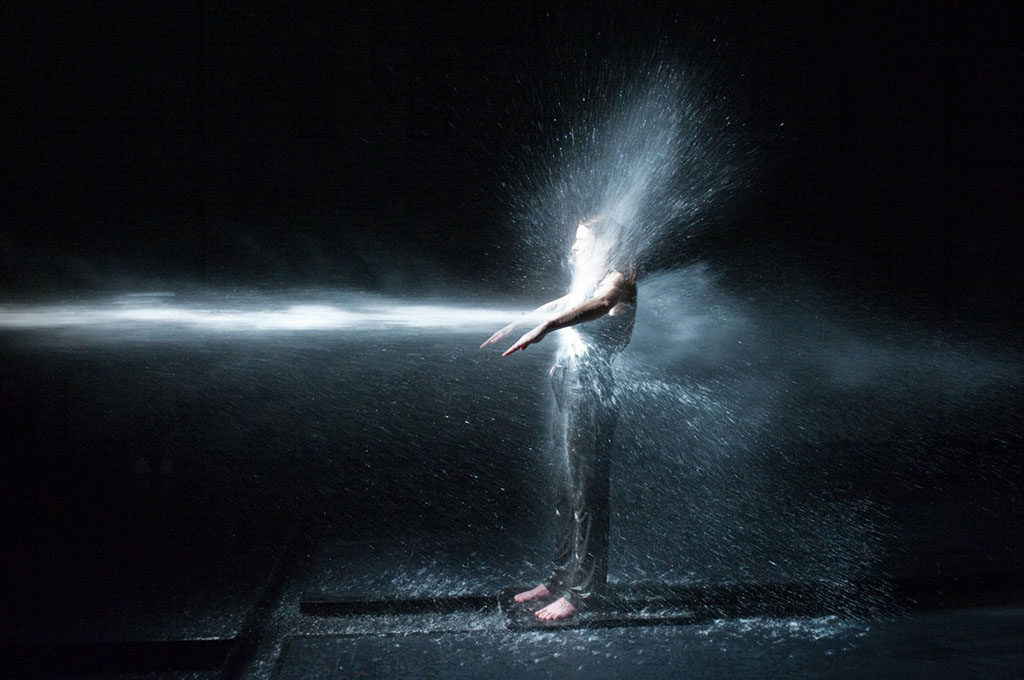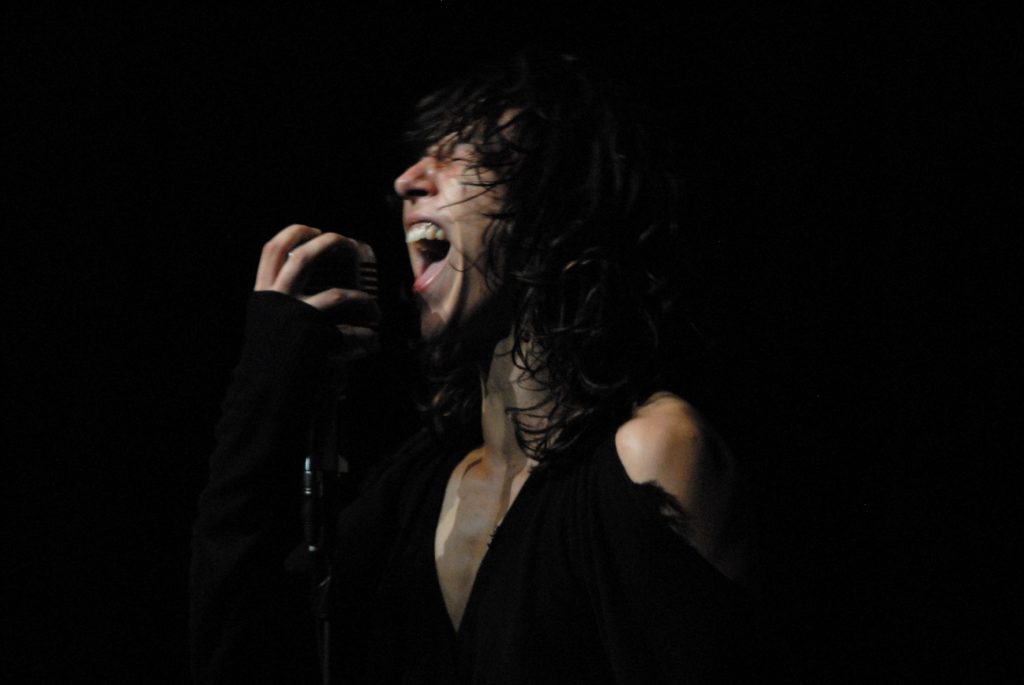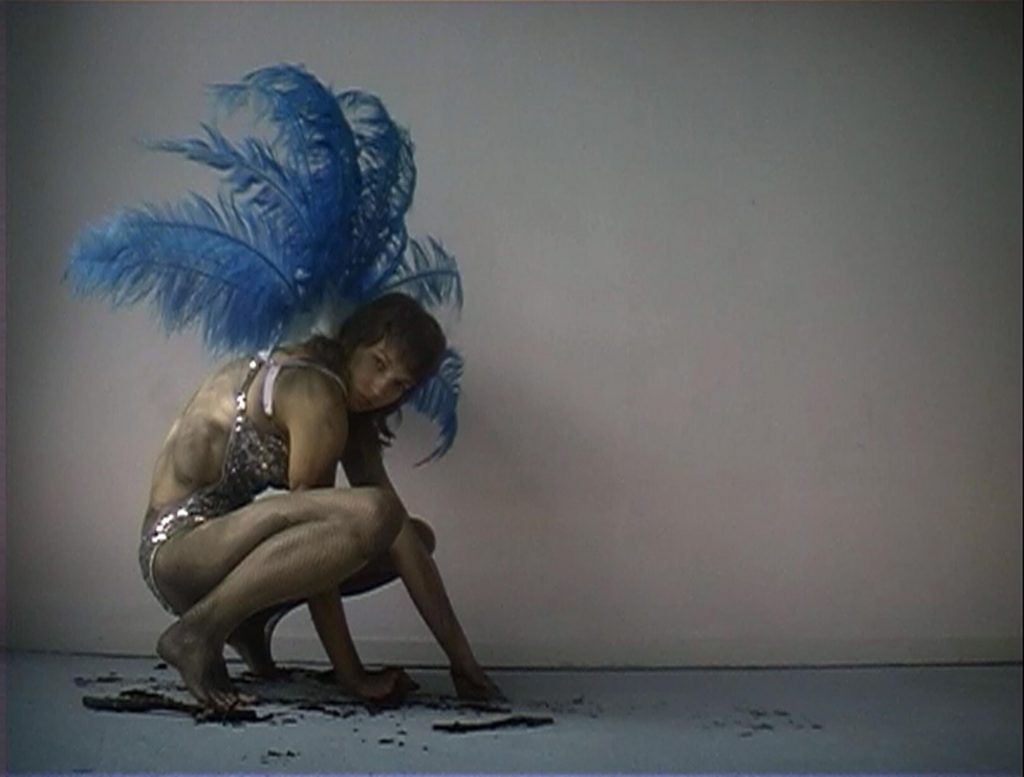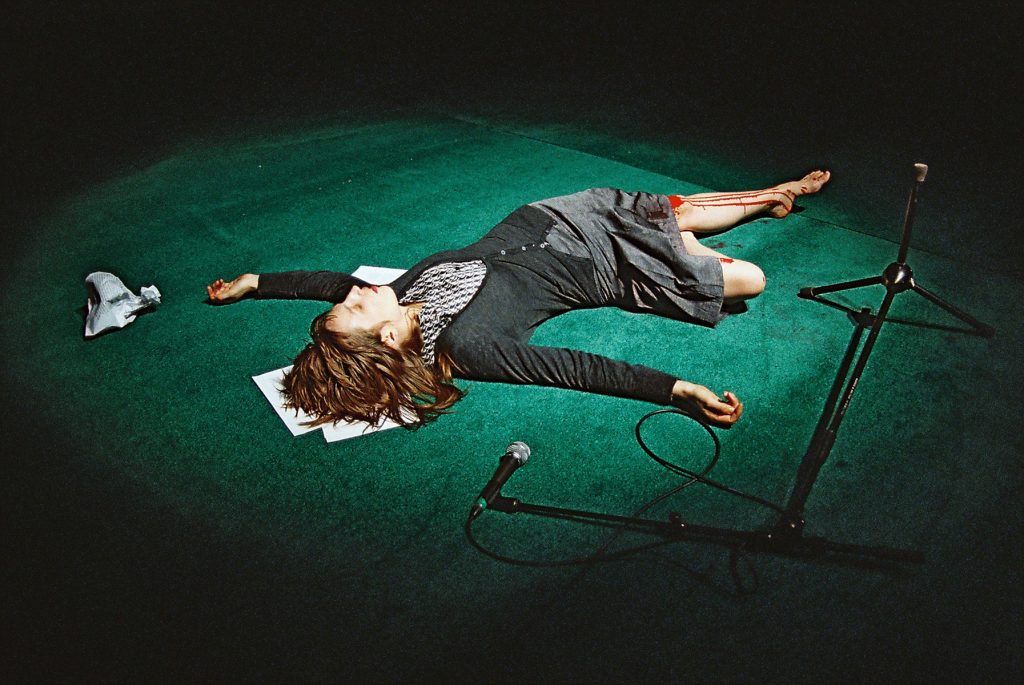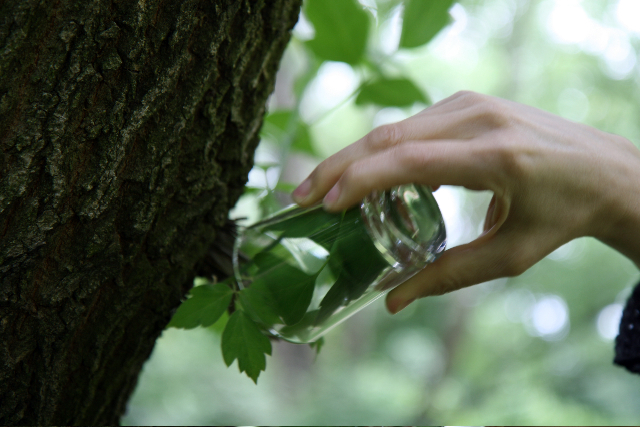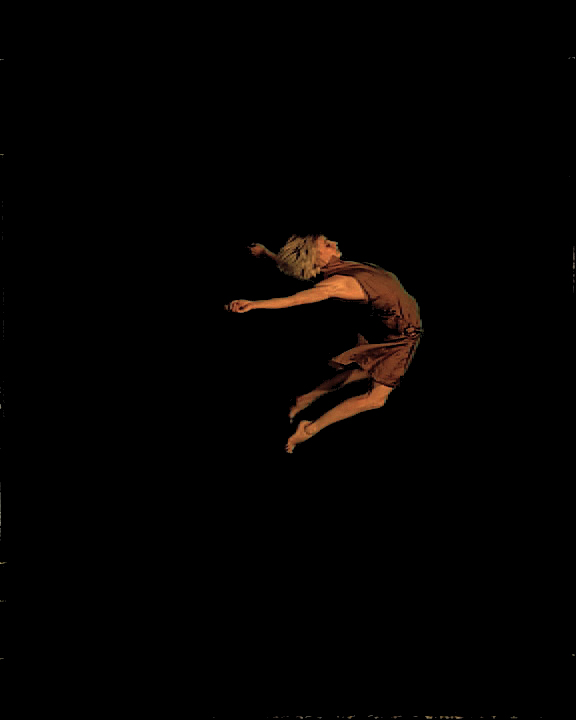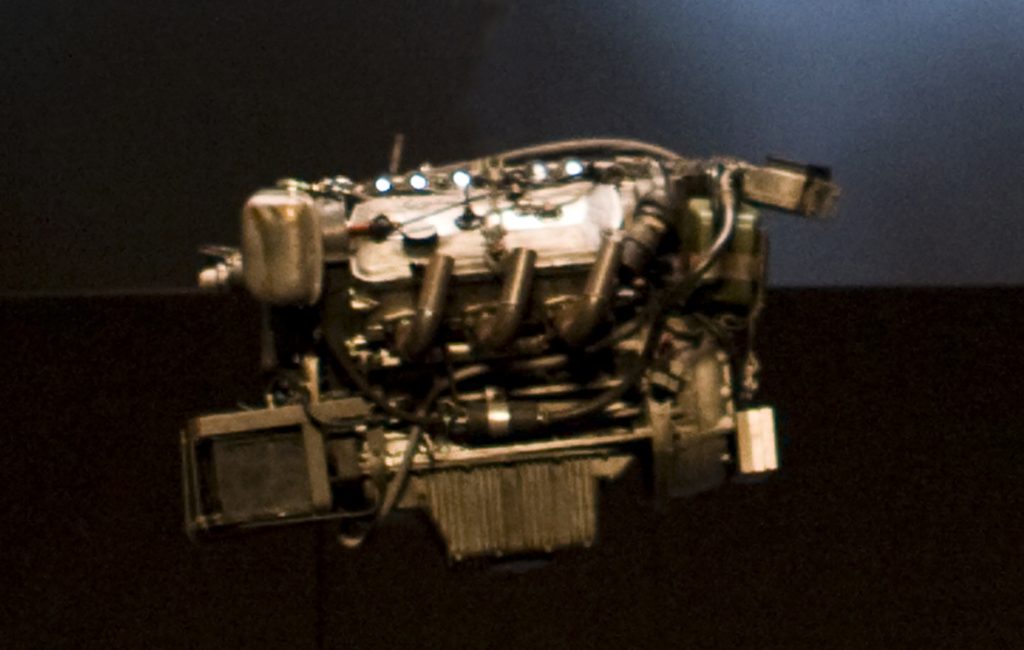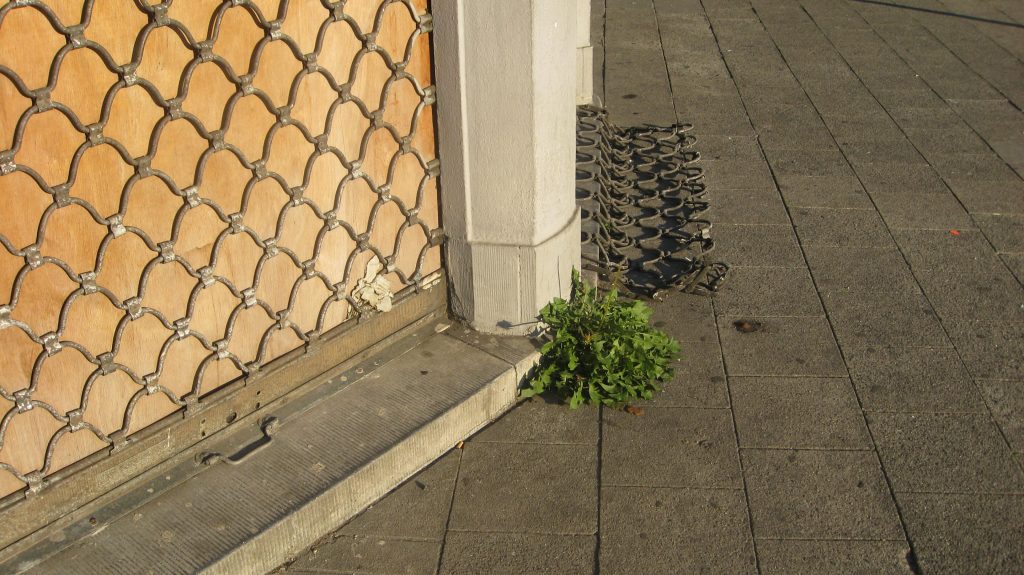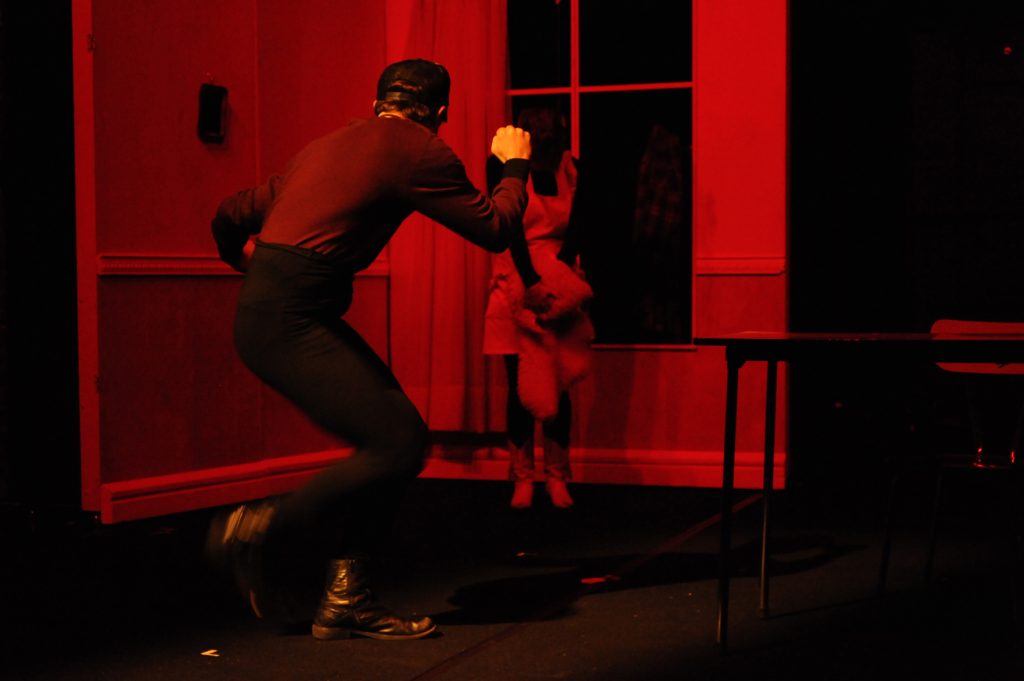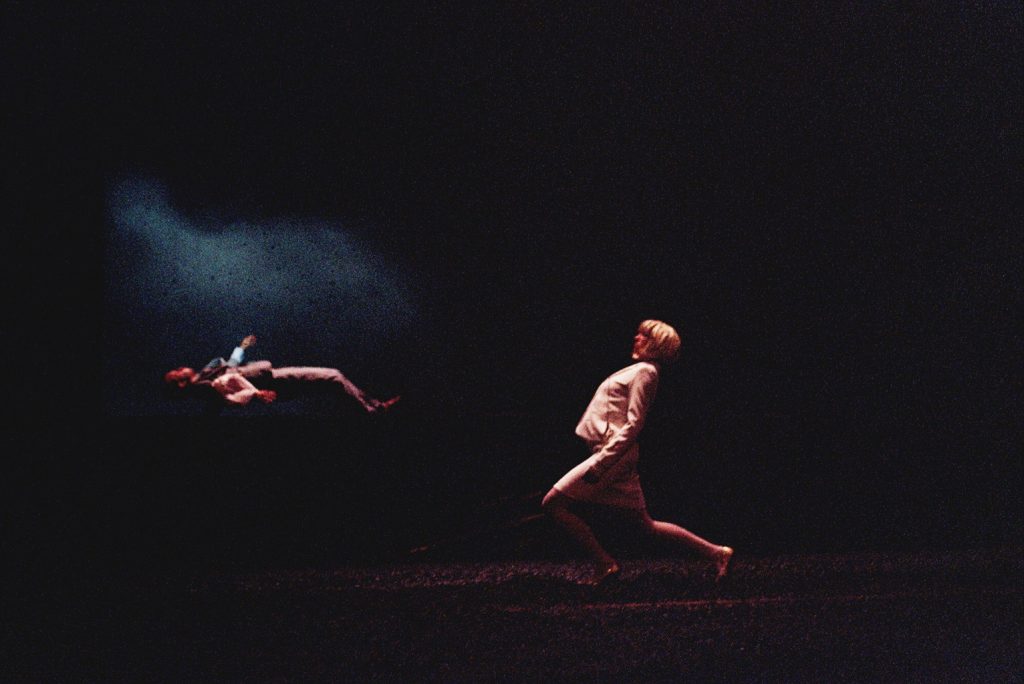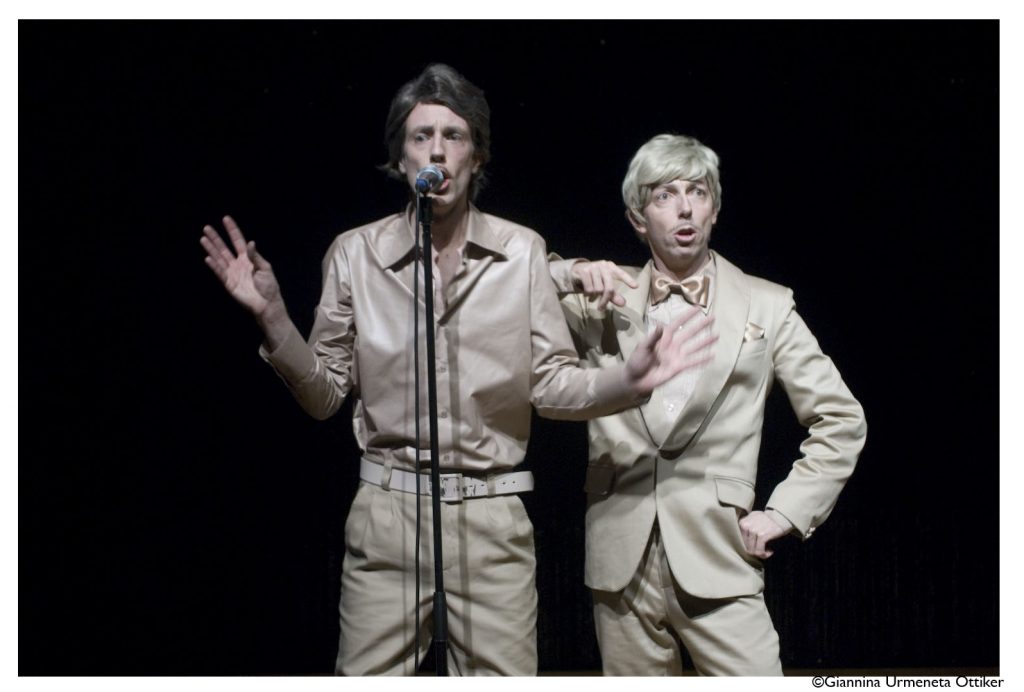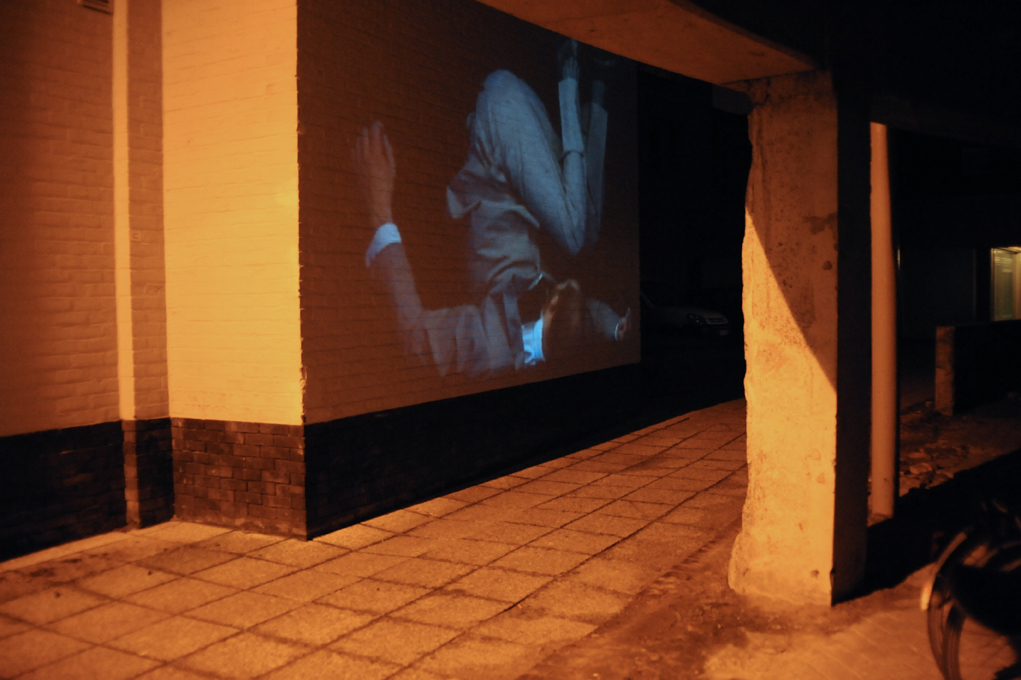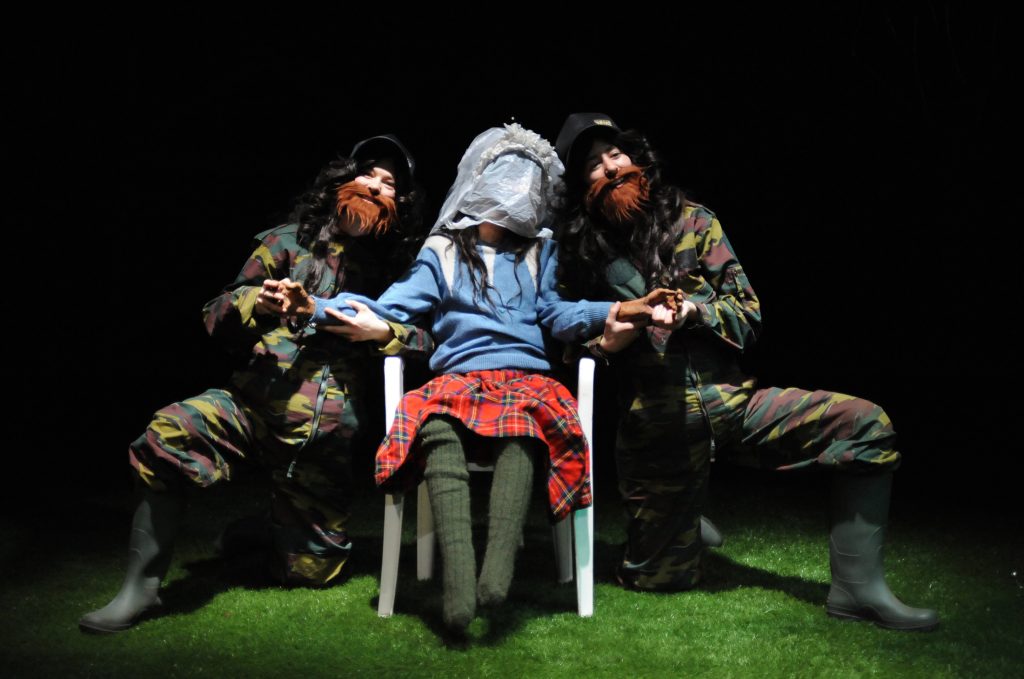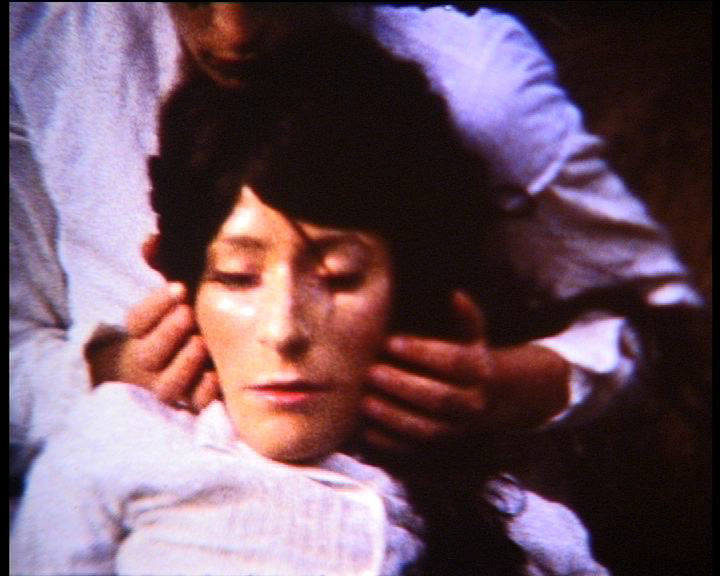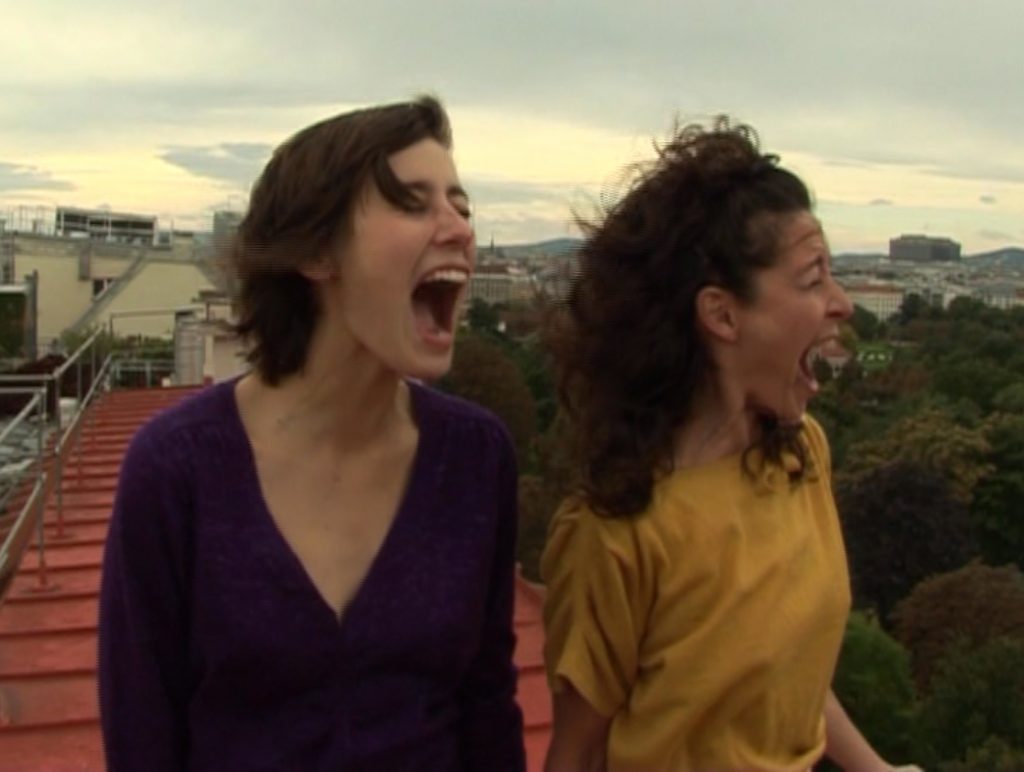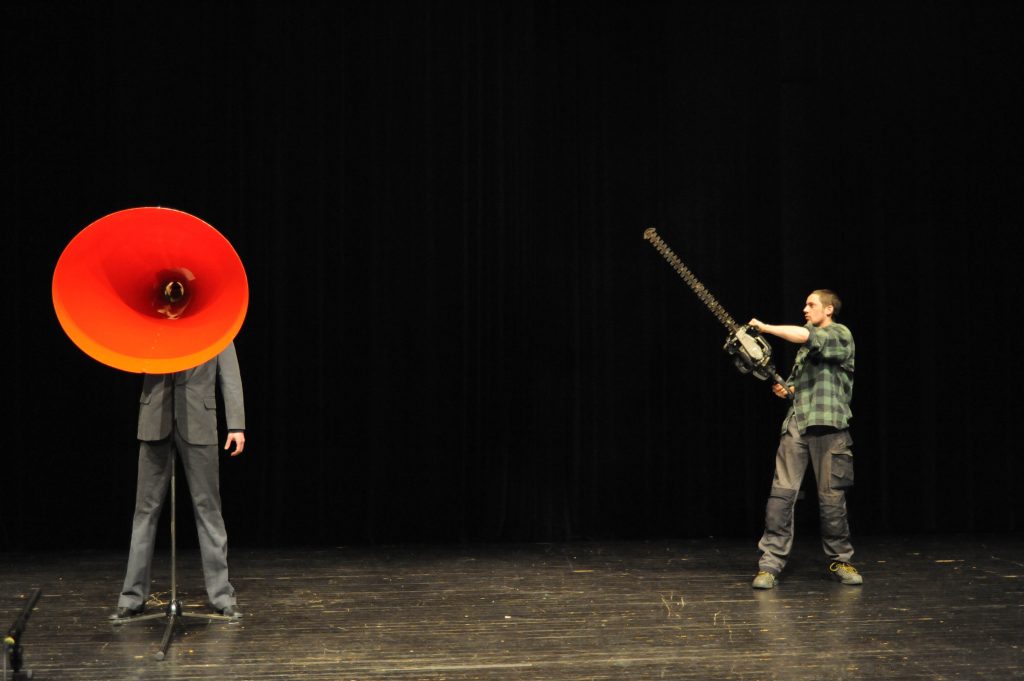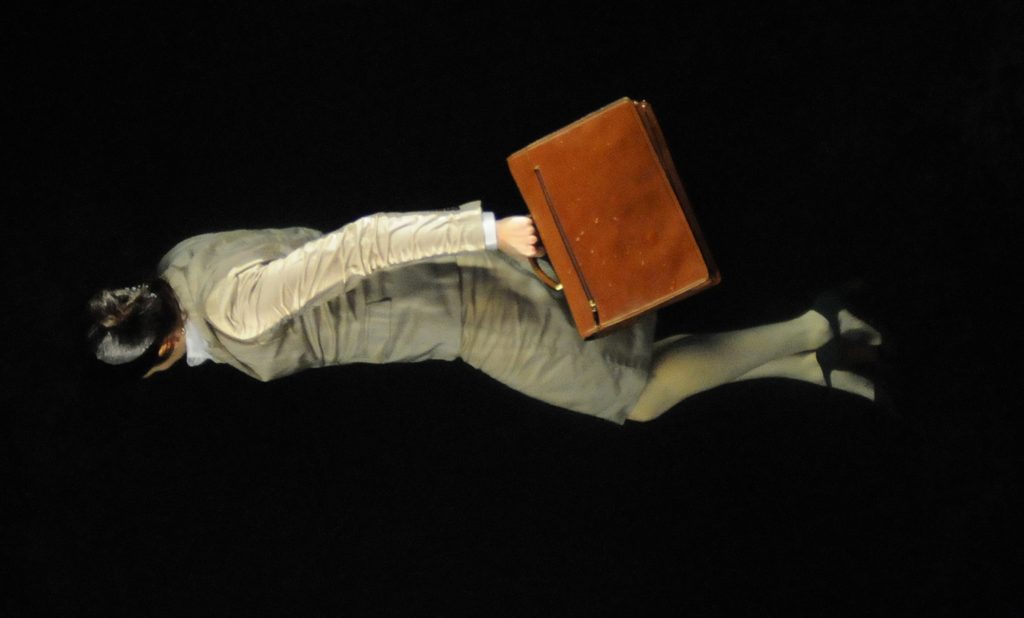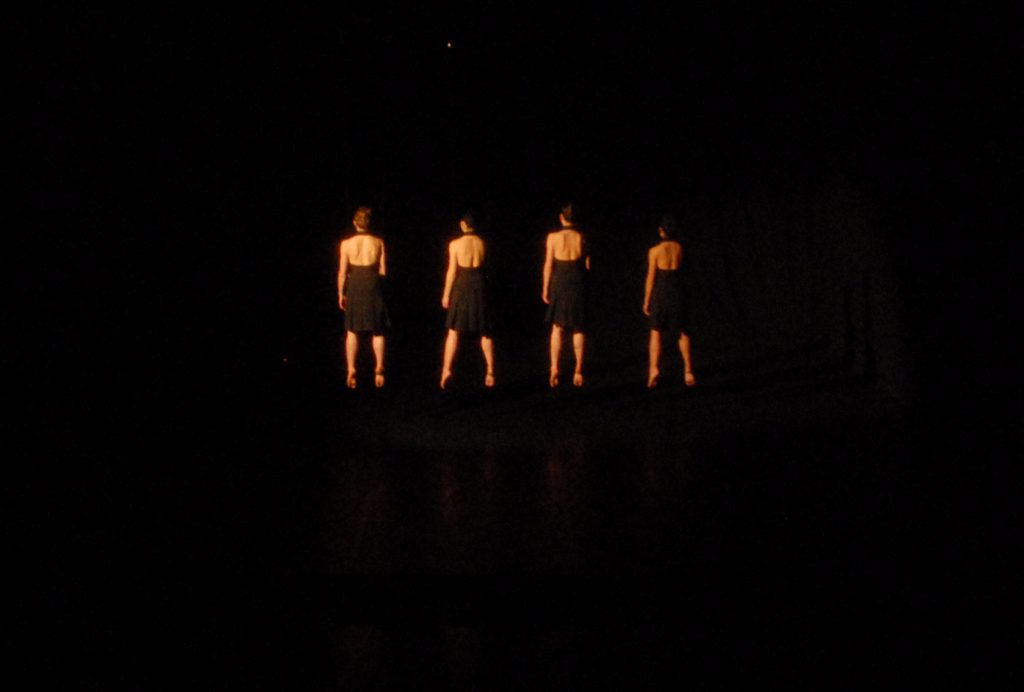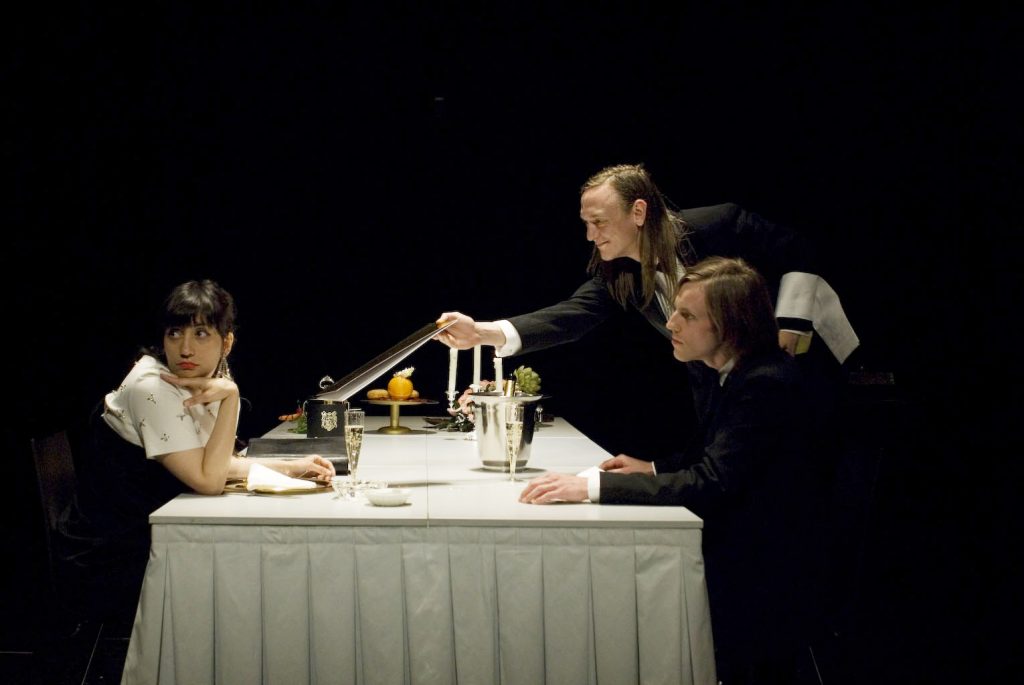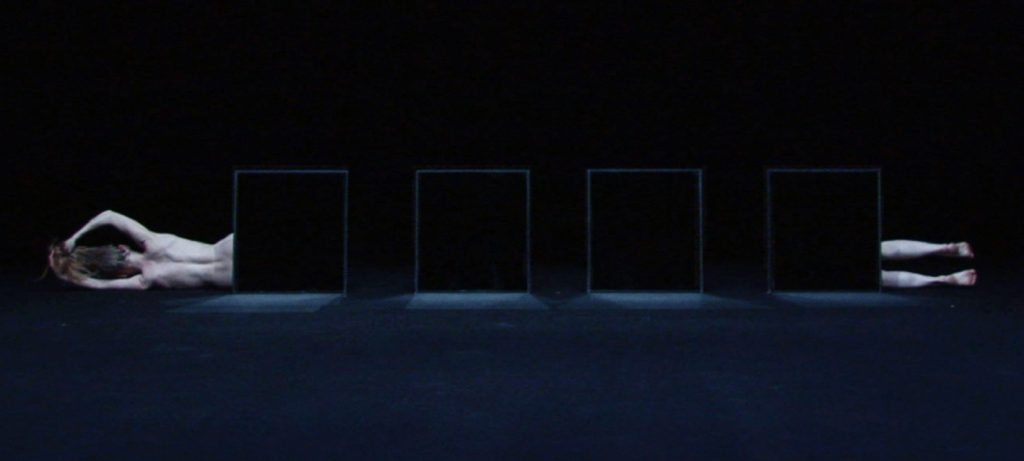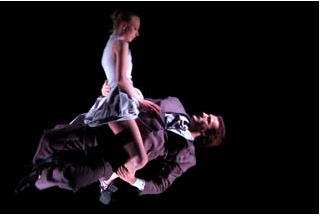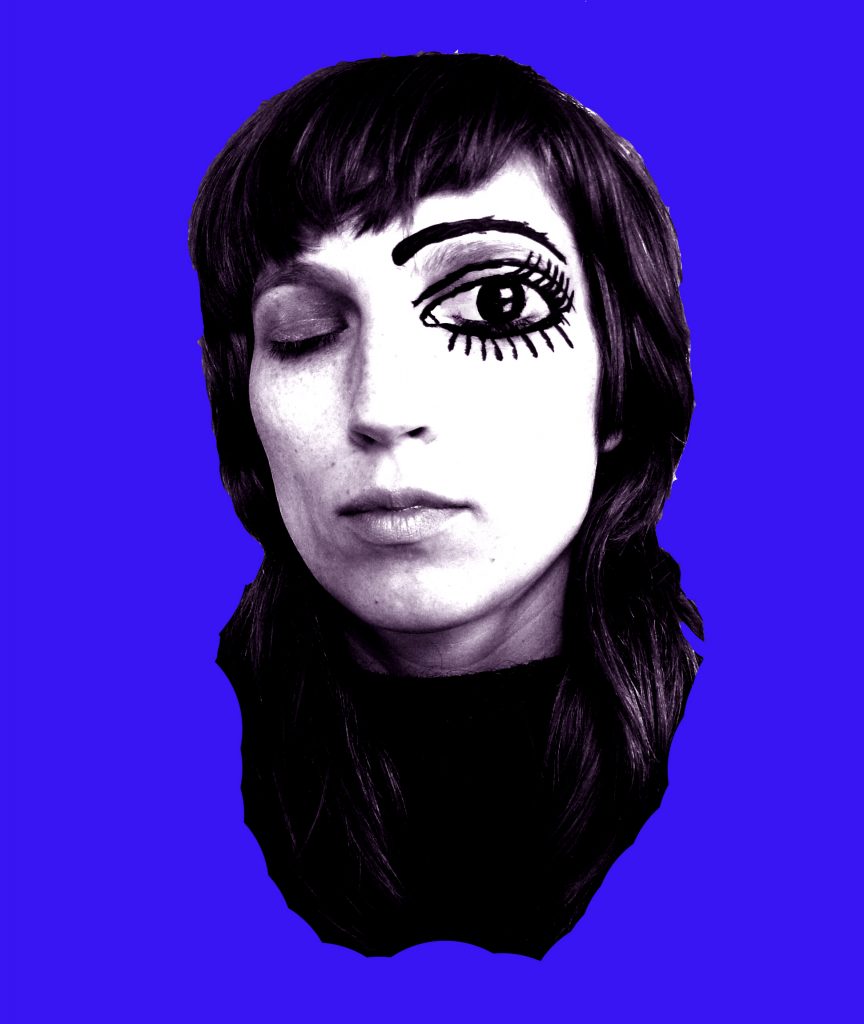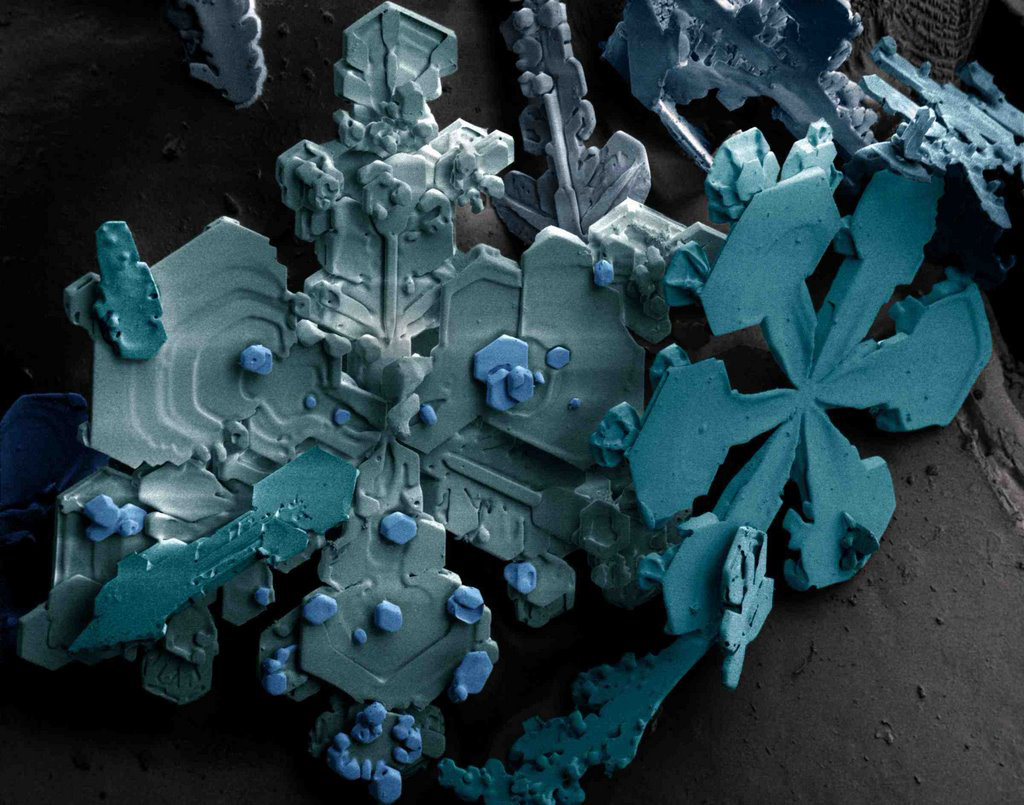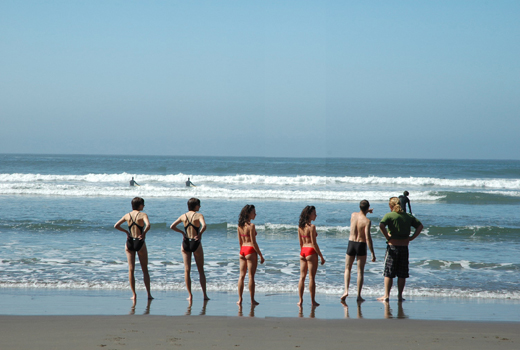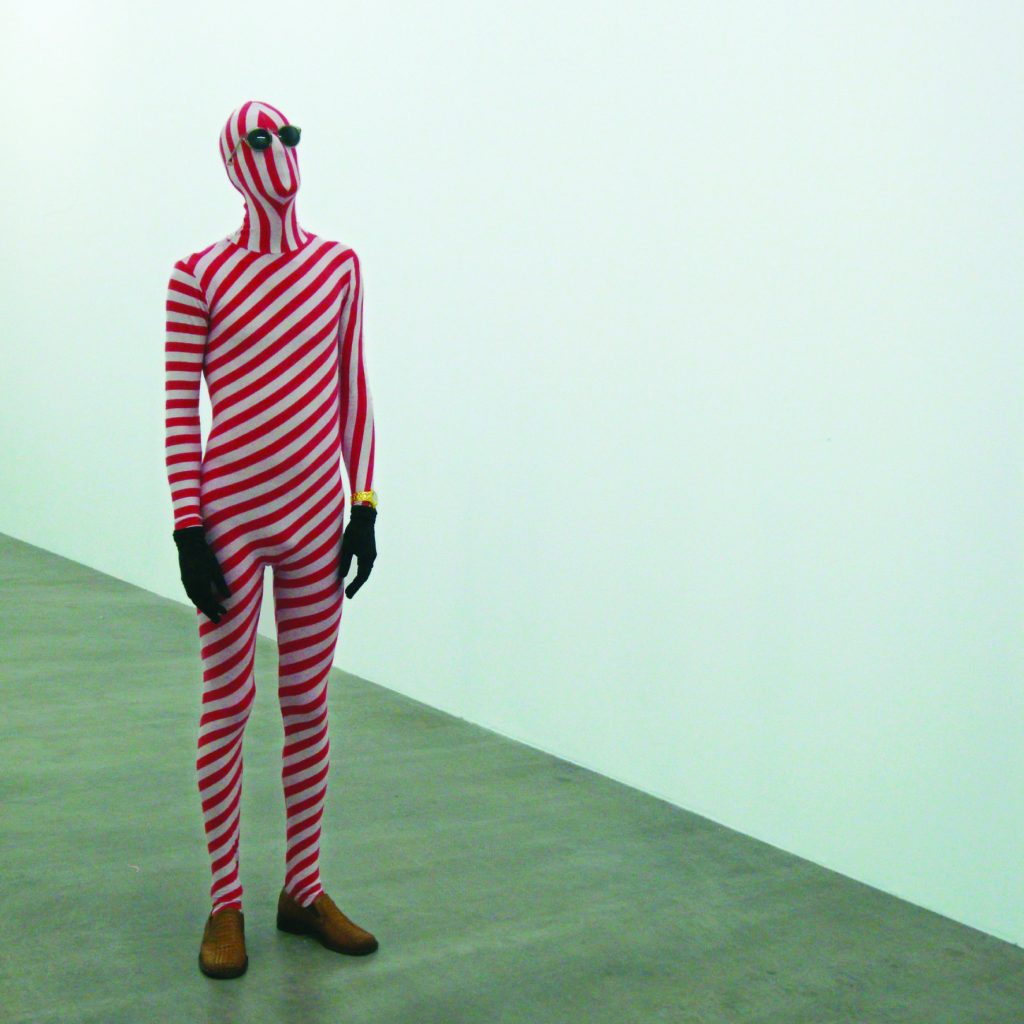With How do you like my landscape Manah Depauw and Bernard Van Eeghem use sharp imagination to redefine the place of the human body within our society, which is still prey to a puritanical eye and political correctness. By means of slight manipulation – disconcerning by its simplicity – Depauw and Van Eeghem remove the human body from its normal context and place it in unexpected situations. The four-episode spectacle takes place around a landscape where the apparent tranquillity only serves to camouflage terrible beasts that, given a chance would awaken in us all those desires that we prefer to remain hidden. The audience follows a world that transforms itself and develops through the four episodes.
Agenda
Filter by artist
Le silence des danses, comprises three performances in three different places in the Kaaistudios.
In this work Spie is taking a new direction. She departs from the purely visual and enters into confrontation with other media: digital images, soundscapes, text, dance, etc. This choice has led to a different way of organising her work: it implies collaboration with artists who work in a variety of areas. What is more, Spie has until now been the main and often only performer in her work.
In the first two parts of Le silence des danses, she takes on the role of director-sculptor of other performers. In the third she herself takes part. However, this new phase in her work above all signifies the next step in her quest for abstraction and purity and a transition from still, frozen, breathing images to moving images.
Le silence des danses means: embracing abstraction, letting movement take its own course, not letting go of one’s intuition.
The human body is a machine full of animal reflexes and signals. Our spirit drives that beautiful instrument, but what drives our mind?
BIRTH of PREY observes the routines, rituals and the body language between predator and prey.
Who is what, when and why? How do our instincts affect our bodies? How dependent are we of our drives and (how long) can we control them?
BIRTH of PREY, a circular ritual that gives form to the interaction between the rational instruction and the metaphysical emotion. The constant metamorphosis of the being.
A Las Vegas showgirl emerges from a month lost in the forest – muddy, disheveled and more animal than human. Somebody explains the expenses involved in being authentic. One woman reads pheromones. Another explains her ‘instinct for failure’.
Some stories are treason, some are dreamy, some are brutal, some are too funny to believe, some are too painful to tell straight, some are magical and others are poorly made, some might be the honest truth, and some are beautiful but hard to remember. A narrative is a slippery thing.
Kate McIntosh has collaborated with five writers to make the performance text for LOOSE PROMISE. She gave each of them the same set of narrative ingredients to start from, but asked each to write their own version of the story. The result is a collection of beautiful, difficult and compelling narratives. The stories are bound by their shared origin, but they head out in very different and surprising directions. The narratives of LOOSE PROMISE create worlds that echo each other, and yet can hardly co-exist. The performance itself, sparked by a fascination with the interdependence of stories, explores our compulsion to keep forming and digesting them….
Video Installation
Over one summer meeting Kate McIntosh and Eva Meyer-Keller came up with a game. Shifting through the city, from inside to out, they constructed small installations in the locations they found. They played a ping-pong of images between them – each action challenging the other to a reply. The result is a collection of short actions and unlikely installations – a constantly expanding inventory of the world, through mischievous re-placements of the things in it. The project is endless. There is a persistence and inquisitiveness about this catalogue of small crushings, traps, decorations, and repairs – there is an internal logic that can only be read as ‘putting things in the wrong place’ and yet which satisfies some curiosity, some desire, before passing quickly to the next. The rearrangements are subversive, cryptic, and at times mysterious relocations of banal materials in every-day environments. Each image is a fragment in a rolling, compiling world-view; a hands-on investigation of what-might-go-where, and what might happen when one ‘thing’ meets another.
This collaboration was the first stage of the FlashPoint project – a series of meetings in which Kate invites each time a different artist for a short collaboration.
His eyes are staring, his mouth is open, his wings are spread. This is how one pictures the angel of history. His face is turned toward the past. Where we perceive a chain of events, he sees one single catastrophe which keeps piling wreckage and hurls it in front of his feet. The angel would like to stay, awaken the dead, and make whole what has been smashed. But a storm is blowing in from Paradise; it has got caught in his wings with such a violence that the angel can no longer close them. The storm irresistibly propels him into the future to which his back is turned, while the pile of debris before him grows skyward. This storm is what we call progress. (Walter Benjamin, Angelus Novus )
The combustion engine, or its use, is one of the main guilty parties in the climate crisis. Kris Verdonck shows the engine in its naked reality and seeks out a confrontation between the ethical and the aesthetic.
With a group of fifteen participants, Irma Firma combs the neighbourhood in search of anything edible. How can we survive in a metropolis on tasty and nutritious ingredients provided by the city itself? Pick, forage and taste!
Some stories are treason, some are dreamy, some are brutal, some are too funny to believe, some are too painful to tell straight, some are magical and others are poorly made, some might be the honest truth, and some are beautiful but hard to remember. A narrative is a slippery thing.
Kate McIntosh has collaborated with five writers to make the performance text for LOOSE PROMISE. She gave each of them the same set of narrative ingredients to start from, but asked each to write their own version of the story. The result is a collection of beautiful, difficult and compelling narratives. The stories are bound by their shared origin, but they head out in very different and surprising directions. The narratives of LOOSE PROMISE create worlds that echo each other, and yet can hardly co-exist. The performance itself, sparked by a fascination with the interdependence of stories, explores our compulsion to keep forming and digesting them….
Diederik Peeters’ phantasmagoria ‘Thriller…’ plays with the solidity of the way we look at things. Peeters marvels at the delicacy of our attempts to knit together our impressions, and at how absurd it is that we manage to perform one act after the other without losing a basic sense of coherence.
‘Thriller…’ is a wordless and slightly sinister type of sitcom that just doesn’t seem to get going. Maybe nothing ever happens in this piece. We witness a character in a given interior – a room. He seems involved in the beginnings of a story, but quickly gets entangled in the splinters and echoes of his own actions. Clues and bits of possible plot are thrown about, left to loop and spiral on each other, searching for some connection within the bigger picture. Meanwhile the interior begins to dissipate, losing any safety or familiarity it once held. Mysteriously dimming wall lamps, money on a mantelpiece and the obligatory murder weapon pop up in a mash of mystery and abstraction. In this scattered reality time is merely a device that prevents everything from happening at once. But amidst all this, the inhabitant maintains his relentless endeavors to grasp a thread of logic…
In END, the performance artist Kris Verdonck shows the possible final stages of a human society in ten scenes. Melting glaciers, burning forests, cities under water, ubiquitous screens and cameras spying on us, the uncontrolled availability of weapons of mass destruction, and so on.
END starts out from the images the media project onto our retinas all day and every day. The ten scenes are linked by a monologue spoken by a single character: the witness who sees it all happen. While this survivor – like the messenger in Greek tragedy – talks unceasingly, a series of ‘Figures’ appears on stage: machines and people or a combination of the two. They go from one side of the stage to the other, all in the same direction. Are they fleeing something? If so, what?
Some stories are treason, some are dreamy, some are brutal, some are too funny to believe, some are too painful to tell straight, some are magical and others are poorly made, some might be the honest truth, and some are beautiful but hard to remember. A narrative is a slippery thing.
Kate McIntosh has collaborated with five writers to make the performance text for LOOSE PROMISE. She gave each of them the same set of narrative ingredients to start from, but asked each to write their own version of the story. The result is a collection of beautiful, difficult and compelling narratives. The stories are bound by their shared origin, but they head out in very different and surprising directions. The narratives of LOOSE PROMISE create worlds that echo each other, and yet can hardly co-exist. The performance itself, sparked by a fascination with the interdependence of stories, explores our compulsion to keep forming and digesting them….
One Man Snow is a late night act in which the entertainer is haunted by his bygone past. He re-lives moments from some other showbiz career, dreams about a show that he himself would have liked to see. There are fantasies and there is paranoia. He enters the show of his absurdist nightmares, haunted by the ghosts of entertainment. Secretly he’s expecting a special guest, he’s longing for the sound of a big band, but all he can get is just the smell of it! One Man Snow is a project by Hans Bryssinck and Christoph Hefti.
Some stories are treason, some are dreamy, some are brutal, some are too funny to believe, some are too painful to tell straight, some are magical and others are poorly made, some might be the honest truth, and some are beautiful but hard to remember. A narrative is a slippery thing.
Kate McIntosh has collaborated with five writers to make the performance text for LOOSE PROMISE. She gave each of them the same set of narrative ingredients to start from, but asked each to write their own version of the story. The result is a collection of beautiful, difficult and compelling narratives. The stories are bound by their shared origin, but they head out in very different and surprising directions. The narratives of LOOSE PROMISE create worlds that echo each other, and yet can hardly co-exist. The performance itself, sparked by a fascination with the interdependence of stories, explores our compulsion to keep forming and digesting them….
Some stories are treason, some are dreamy, some are brutal, some are too funny to believe, some are too painful to tell straight, some are magical and others are poorly made, some might be the honest truth, and some are beautiful but hard to remember. A narrative is a slippery thing.
Kate McIntosh has collaborated with five writers to make the performance text for LOOSE PROMISE. She gave each of them the same set of narrative ingredients to start from, but asked each to write their own version of the story. The result is a collection of beautiful, difficult and compelling narratives. The stories are bound by their shared origin, but they head out in very different and surprising directions. The narratives of LOOSE PROMISE create worlds that echo each other, and yet can hardly co-exist. The performance itself, sparked by a fascination with the interdependence of stories, explores our compulsion to keep forming and digesting them….
Video Installation
Over one summer meeting Kate McIntosh and Eva Meyer-Keller came up with a game. Shifting through the city, from inside to out, they constructed small installations in the locations they found. They played a ping-pong of images between them – each action challenging the other to a reply. The result is a collection of short actions and unlikely installations – a constantly expanding inventory of the world, through mischievous re-placements of the things in it. The project is endless. There is a persistence and inquisitiveness about this catalogue of small crushings, traps, decorations, and repairs – there is an internal logic that can only be read as ‘putting things in the wrong place’ and yet which satisfies some curiosity, some desire, before passing quickly to the next. The rearrangements are subversive, cryptic, and at times mysterious relocations of banal materials in every-day environments. Each image is a fragment in a rolling, compiling world-view; a hands-on investigation of what-might-go-where, and what might happen when one ‘thing’ meets another.
This collaboration was the first stage of the FlashPoint project – a series of meetings in which Kate invites each time a different artist for a short collaboration.
Diederik Peeters’ phantasmagoria ‘Thriller…’ plays with the solidity of the way we look at things. Peeters marvels at the delicacy of our attempts to knit together our impressions, and at how absurd it is that we manage to perform one act after the other without losing a basic sense of coherence.
‘Thriller…’ is a wordless and slightly sinister type of sitcom that just doesn’t seem to get going. Maybe nothing ever happens in this piece. We witness a character in a given interior – a room. He seems involved in the beginnings of a story, but quickly gets entangled in the splinters and echoes of his own actions. Clues and bits of possible plot are thrown about, left to loop and spiral on each other, searching for some connection within the bigger picture. Meanwhile the interior begins to dissipate, losing any safety or familiarity it once held. Mysteriously dimming wall lamps, money on a mantelpiece and the obligatory murder weapon pop up in a mash of mystery and abstraction. In this scattered reality time is merely a device that prevents everything from happening at once. But amidst all this, the inhabitant maintains his relentless endeavors to grasp a thread of logic…
DUMP is a video projection that talks about the overall malaise in the business world.
The human body is a machine full of animal reflexes and signals. Our spirit drives that beautiful instrument, but what drives our mind?
BIRTH of PREY observes the routines, rituals and the body language between predator and prey.
Who is what, when and why? How do our instincts affect our bodies? How dependent are we of our drives and (how long) can we control them?
BIRTH of PREY, a circular ritual that gives form to the interaction between the rational instruction and the metaphysical emotion. The constant metamorphosis of the being.
To cut a long story short: It is the story of a woman, a hunter, a razor blade, a disease, a painkiller … At a certain moment there is domestic violence … But the blood is only splashing to all sides in the end… like the fountains in Geneva.
“Thank goodness hunter Johnson was on the watch! Not only that was good news. As it happened the hunter carried around a true painkiller in his pocket. Not one of those small powders but a proper pill. So he decides to rescue her.
Like a crazy maniac Johnson leaps out of his hiding place; and even before she gets a chance to turn her head and look at him, he has already inserted his painkiller deeply from behind. And that makes her feel better…”
Jen Debauche and Manah Depauw realised the short film Gemini, shot in Super 8, in the woods of Mesy during the summer of 2009.
In this film a woman goes into a duel with her double. Together they drift through the forest in search of a hole where they can find an infinite and perfect rest. Gemini intrigues with its surreal character, strange and dark like a forest at the end of the day.
A sensual discovery of the world by two alien girls and some strange encounters…
“The body is the physical aspect of the personality and movement is the personality made visible.” writes Mary Starks Whitehouse, who developed a practice in the 50′ called “Authentic Movement”.
One Man Snow is a late night act in which the entertainer is haunted by his bygone past. He re-lives moments from some other showbiz career, dreams about a show that he himself would have liked to see. There are fantasies and there is paranoia. He enters the show of his absurdist nightmares, haunted by the ghosts of entertainment. Secretly he’s expecting a special guest, he’s longing for the sound of a big band, but all he can get is just the smell of it! One Man Snow is a project by Hans Bryssinck and Christoph Hefti.
The human body is a machine full of animal reflexes and signals. Our spirit drives that beautiful instrument, but what drives our mind?
BIRTH of PREY observes the routines, rituals and the body language between predator and prey.
Who is what, when and why? How do our instincts affect our bodies? How dependent are we of our drives and (how long) can we control them?
BIRTH of PREY, a circular ritual that gives form to the interaction between the rational instruction and the metaphysical emotion. The constant metamorphosis of the being.
With a group of fifteen participants, Irma Firma combs the neighbourhood in search of anything edible. How can we survive in a metropolis on tasty and nutritious ingredients provided by the city itself? Pick, forage and taste!
To cut a long story short: It is the story of a woman, a hunter, a razor blade, a disease, a painkiller … At a certain moment there is domestic violence … But the blood is only splashing to all sides in the end… like the fountains in Geneva.
“Thank goodness hunter Johnson was on the watch! Not only that was good news. As it happened the hunter carried around a true painkiller in his pocket. Not one of those small powders but a proper pill. So he decides to rescue her.
Like a crazy maniac Johnson leaps out of his hiding place; and even before she gets a chance to turn her head and look at him, he has already inserted his painkiller deeply from behind. And that makes her feel better…”
Jen Debauche and Manah Depauw realised the short film Gemini, shot in Super 8, in the woods of Mesy during the summer of 2009.
In this film a woman goes into a duel with her double. Together they drift through the forest in search of a hole where they can find an infinite and perfect rest. Gemini intrigues with its surreal character, strange and dark like a forest at the end of the day.
In these Safety Instructions Hans Bryssinck holds speeches in which he attempts to say something truthful. Because he fears to say something truthful and because he fears loneliness he invites a guest alongside an object or a machine that relates to them. This can range from bikers (motorbike), cyclists (bike) and green workers (chainsaw) to householders (vacuum cleaner). The dynamic that is created between the speech and the guest with his machine describes the struggle of speaking and hearing the truth.
These are short and spontaneous performances that are adapted according to the context. The space in which they take place, the guests and the content of the speech may vary.
To cut a long story short: It is the story of a woman, a hunter, a razor blade, a disease, a painkiller … At a certain moment there is domestic violence … But the blood is only splashing to all sides in the end… like the fountains in Geneva.
“Thank goodness hunter Johnson was on the watch! Not only that was good news. As it happened the hunter carried around a true painkiller in his pocket. Not one of those small powders but a proper pill. So he decides to rescue her.
Like a crazy maniac Johnson leaps out of his hiding place; and even before she gets a chance to turn her head and look at him, he has already inserted his painkiller deeply from behind. And that makes her feel better…”
Leentje Vandenbussche doesn’t only make performative pieces, her work also takes the shape of a visual arts practice. It is often in preparation of her performances, that (monk-like) graphical work and publications come to life, in a quest to overcome linguistics, and to visualize data. A human being tries to understand. The research method of Leentje Vandenbussche verges on insanity. By means of different drudgeries she has looked for something to hold on to in the vast subjects of all and nothing. Carried by (/subordinated to) an isolated, monotonous rhythm, her research studies give intriguing results. A fascinating view on all and nothing, a look behind the scenes of the performances.
An overview of former projects, dating from 2005 till today, is listed below.
The human body is a machine full of animal reflexes and signals. Our spirit drives that beautiful instrument, but what drives our mind?
BIRTH of PREY observes the routines, rituals and the body language between predator and prey.
Who is what, when and why? How do our instincts affect our bodies? How dependent are we of our drives and (how long) can we control them?
BIRTH of PREY, a circular ritual that gives form to the interaction between the rational instruction and the metaphysical emotion. The constant metamorphosis of the being.
The body of a giant floats on the water, his face turned down. It moves slightly, but whether the movement is the result of his breathing or of the water rippling it’s hard to tell. The image is ambiguous: dead as well as alive, both serene and billowed, blissful or perhaps dead drunk. Who is he? Who has dumped him here?
In these Safety Instructions Hans Bryssinck holds speeches in which he attempts to say something truthful. Because he fears to say something truthful and because he fears loneliness he invites a guest alongside an object or a machine that relates to them. This can range from bikers (motorbike), cyclists (bike) and green workers (chainsaw) to householders (vacuum cleaner). The dynamic that is created between the speech and the guest with his machine describes the struggle of speaking and hearing the truth.
These are short and spontaneous performances that are adapted according to the context. The space in which they take place, the guests and the content of the speech may vary.
Le silence des danses, comprises three performances in three different places in the Kaaistudios.
In this work Spie is taking a new direction. She departs from the purely visual and enters into confrontation with other media: digital images, soundscapes, text, dance, etc. This choice has led to a different way of organising her work: it implies collaboration with artists who work in a variety of areas. What is more, Spie has until now been the main and often only performer in her work.
In the first two parts of Le silence des danses, she takes on the role of director-sculptor of other performers. In the third she herself takes part. However, this new phase in her work above all signifies the next step in her quest for abstraction and purity and a transition from still, frozen, breathing images to moving images.
Le silence des danses means: embracing abstraction, letting movement take its own course, not letting go of one’s intuition.
To cut a long story short: It is the story of a woman, a hunter, a razor blade, a disease, a painkiller … At a certain moment there is domestic violence … But the blood is only splashing to all sides in the end… like the fountains in Geneva.
“Thank goodness hunter Johnson was on the watch! Not only that was good news. As it happened the hunter carried around a true painkiller in his pocket. Not one of those small powders but a proper pill. So he decides to rescue her.
Like a crazy maniac Johnson leaps out of his hiding place; and even before she gets a chance to turn her head and look at him, he has already inserted his painkiller deeply from behind. And that makes her feel better…”
I/II/III/IIII is a new theatrical installation by the performance artist Kris Verdonck. Four ‘identical’ female dancers hang like marionettes in a huge ‘machine’. Together with them performance artist Kris Verdonck generated a passage of choreography: a solo, a duet, a trio and a pas de quatre. They sought the greatest possible freedom from the machine, but sooner or later it sent them in the direction it decided upon. The images evoked by I/II/III/IIII are confusing, many-layered and ambiguous: they remind us of the white birds in Swan Lake and also of animal carcases being dragged along, hovering angels, falling human bodies and everything in between.
To cut a long story short: It is the story of a woman, a hunter, a razor blade, a disease, a painkiller … At a certain moment there is domestic violence … But the blood is only splashing to all sides in the end… like the fountains in Geneva.
“Thank goodness hunter Johnson was on the watch! Not only that was good news. As it happened the hunter carried around a true painkiller in his pocket. Not one of those small powders but a proper pill. So he decides to rescue her.
Like a crazy maniac Johnson leaps out of his hiding place; and even before she gets a chance to turn her head and look at him, he has already inserted his painkiller deeply from behind. And that makes her feel better…”
Some stories are treason, some are dreamy, some are brutal, some are too funny to believe, some are too painful to tell straight, some are magical and others are poorly made, some might be the honest truth, and some are beautiful but hard to remember. A narrative is a slippery thing.
Kate McIntosh has collaborated with five writers to make the performance text for LOOSE PROMISE. She gave each of them the same set of narrative ingredients to start from, but asked each to write their own version of the story. The result is a collection of beautiful, difficult and compelling narratives. The stories are bound by their shared origin, but they head out in very different and surprising directions. The narratives of LOOSE PROMISE create worlds that echo each other, and yet can hardly co-exist. The performance itself, sparked by a fascination with the interdependence of stories, explores our compulsion to keep forming and digesting them….
Video Installation
Over one summer meeting Kate McIntosh and Eva Meyer-Keller came up with a game. Shifting through the city, from inside to out, they constructed small installations in the locations they found. They played a ping-pong of images between them – each action challenging the other to a reply. The result is a collection of short actions and unlikely installations – a constantly expanding inventory of the world, through mischievous re-placements of the things in it. The project is endless. There is a persistence and inquisitiveness about this catalogue of small crushings, traps, decorations, and repairs – there is an internal logic that can only be read as ‘putting things in the wrong place’ and yet which satisfies some curiosity, some desire, before passing quickly to the next. The rearrangements are subversive, cryptic, and at times mysterious relocations of banal materials in every-day environments. Each image is a fragment in a rolling, compiling world-view; a hands-on investigation of what-might-go-where, and what might happen when one ‘thing’ meets another.
This collaboration was the first stage of the FlashPoint project – a series of meetings in which Kate invites each time a different artist for a short collaboration.
The human body is a machine full of animal reflexes and signals. Our spirit drives that beautiful instrument, but what drives our mind?
BIRTH of PREY observes the routines, rituals and the body language between predator and prey.
Who is what, when and why? How do our instincts affect our bodies? How dependent are we of our drives and (how long) can we control them?
BIRTH of PREY, a circular ritual that gives form to the interaction between the rational instruction and the metaphysical emotion. The constant metamorphosis of the being.
With How do you like my landscape Manah Depauw and Bernard Van Eeghem use sharp imagination to redefine the place of the human body within our society, which is still prey to a puritanical eye and political correctness. By means of slight manipulation – disconcerning by its simplicity – Depauw and Van Eeghem remove the human body from its normal context and place it in unexpected situations. The four-episode spectacle takes place around a landscape where the apparent tranquillity only serves to camouflage terrible beasts that, given a chance would awaken in us all those desires that we prefer to remain hidden. The audience follows a world that transforms itself and develops through the four episodes.
Hans Bryssinck + Diederik Peeters + D. ANESIADOU
Chuck Norris doesn’t sleep, he waits…
Waar, voorwaar, zijn de discrete charmes van de bourgeoisie gebleven? In hun enigmatisch klinkende ensemblestuk “Chuck Norris Doesn’t Sleep, He Waits…” nemen Danai Anesiadou, Hans Bryssinck en Diederik Peeters elk om beurt de rol van de even decadent als cinematisch icoon waar. Centraal in hun draaiboek van even absurdistisch als streng gechoreografeerde tableaux vivants staat de filmische representatie van aristocratisch ennui.
In “Chuck Norris” dalen onze argeloze protagonisten af in een labyrintische onderwereld van archaïsche codes en ondoorzichtige rituelen; het enige licht aan het einde van deze eindeloos lopende tunnel is dat van ouderwetse, groteske horror: een hartelijk aanbevolen schouwspel van alledaagse verbijstering.
The argument of Specchi , two variations on “the woman cut into pieces” – located between dance and visual art – is the deconstruction of the female form. Here it would involve dismantling the mechanism of illusion, extrapolating it by bringing it into view and exposing on stage with mirrors that cut off, dislocate, derealize; boxes that contain, frame, absorb.
« What interests me is producing truncated forms in relation to image and composition. It is the creation of illuminated, unreal forms outside the immediacy of the bodies.The mirror creates unreal forms outside the immediacy of the bodies. The box is its negation: wrappings that cause a reduction of movement in bas-relief ».
In this visual distancing a specific emotional tension is produced, a kind of “mise en abyme” of what is being seen, a vibration of what is “present on stage”. In this project, the research topic for the female performers is the way the spectator sees women’s bodies. They are challenging collective iconography in order to create new poetic opportunities.
A sensual discovery of the world by two alien girls and some strange encounters…
“The body is the physical aspect of the personality and movement is the personality made visible.” writes Mary Starks Whitehouse, who developed a practice in the 50′ called “Authentic Movement”.
Some stories are treason, some are dreamy, some are brutal, some are too funny to believe, some are too painful to tell straight, some are magical and others are poorly made, some might be the honest truth, and some are beautiful but hard to remember. A narrative is a slippery thing.
Kate McIntosh has collaborated with five writers to make the performance text for LOOSE PROMISE. She gave each of them the same set of narrative ingredients to start from, but asked each to write their own version of the story. The result is a collection of beautiful, difficult and compelling narratives. The stories are bound by their shared origin, but they head out in very different and surprising directions. The narratives of LOOSE PROMISE create worlds that echo each other, and yet can hardly co-exist. The performance itself, sparked by a fascination with the interdependence of stories, explores our compulsion to keep forming and digesting them….
The combustion engine, or its use, is one of the main guilty parties in the climate crisis. Kris Verdonck shows the engine in its naked reality and seeks out a confrontation between the ethical and the aesthetic.
1) Some different aspects of the installation HEART : A man and a woman are connected to each other with a rope, a steal cable, between them a ‘winch’, she stands in front of the audience, he on a ladder behind the curtains: when he jumps, she is pulled backwards 9m and 4m high and smashes against a wall. The man is invisible to the woman, but sometimes she felt when he wanted to jump.
2) The structure of the classical ‘pas de deux’: from this heavily coded material different movements will be distilled.
DESCRIPTION
A man and woman are in a situation of absolute mutual dependence. As opposed to the situation in HEART man and woman are visible for each other. They execute their dance movements in a live loop. These movements will be deconstructed and mechanically manipulated. The machine pushes them to repeat perfectly; for which they inevitably have to trust each other. They are left to each other.
To cut a long story short: It is the story of a woman, a hunter, a razor blade, a disease, a painkiller … At a certain moment there is domestic violence … But the blood is only splashing to all sides in the end… like the fountains in Geneva.
“Thank goodness hunter Johnson was on the watch! Not only that was good news. As it happened the hunter carried around a true painkiller in his pocket. Not one of those small powders but a proper pill. So he decides to rescue her.
Like a crazy maniac Johnson leaps out of his hiding place; and even before she gets a chance to turn her head and look at him, he has already inserted his painkiller deeply from behind. And that makes her feel better…”
In END, the performance artist Kris Verdonck shows the possible final stages of a human society in ten scenes. Melting glaciers, burning forests, cities under water, ubiquitous screens and cameras spying on us, the uncontrolled availability of weapons of mass destruction, and so on.
END starts out from the images the media project onto our retinas all day and every day. The ten scenes are linked by a monologue spoken by a single character: the witness who sees it all happen. While this survivor – like the messenger in Greek tragedy – talks unceasingly, a series of ‘Figures’ appears on stage: machines and people or a combination of the two. They go from one side of the stage to the other, all in the same direction. Are they fleeing something? If so, what?
To cut a long story short: It is the story of a woman, a hunter, a razor blade, a disease, a painkiller … At a certain moment there is domestic violence … But the blood is only splashing to all sides in the end… like the fountains in Geneva.
“Thank goodness hunter Johnson was on the watch! Not only that was good news. As it happened the hunter carried around a true painkiller in his pocket. Not one of those small powders but a proper pill. So he decides to rescue her.
Like a crazy maniac Johnson leaps out of his hiding place; and even before she gets a chance to turn her head and look at him, he has already inserted his painkiller deeply from behind. And that makes her feel better…”
Los Viernes was scripted as one full day of urban experiences throughout Mexico-City; driving around, meeting people, giving lectures in universities, doing guided museum tours etc. On Friday the 21st Bryssinck & Peeters acted out the script and turned it into a performative experience. Exactly one week later, on Friday the 28th they tried to re-enact this original day as literally and as precisely as possible. They took the same taxi to meet the same people wearing the same clothes at exactly the same time in the same place to have the same conversations and so on. In other words: an attempt to meticulously copy 24 hours of metropolitan and urban reality.
In the video documenting this attempt the two main characters and their collaborators are fighting impossible fights both with the chaotic surroundings and with time itself. The question arises as to what status a fake day like ‘Friday the second’ should really be accorded, whether it can be robbed of its uniqueness and can be called fake at all. Thus Los Viernes ponders on the true nature or value of performance, documentation and film and it haughtily questions the supposedly singular nature of time’s arrow that unquestionably and unstoppably moves forward and onward.
Los Viernes was made for a group exhibition Storage and Display in Programa Art Center in Mexico City in February 2003, curated by Dieter Roelstraete from the MUHKA museum in Antwerp, Roger Willems and Iñaki Bonillas.
The human body is a machine full of animal reflexes and signals. Our spirit drives that beautiful instrument, but what drives our mind?
BIRTH of PREY observes the routines, rituals and the body language between predator and prey.
Who is what, when and why? How do our instincts affect our bodies? How dependent are we of our drives and (how long) can we control them?
BIRTH of PREY, a circular ritual that gives form to the interaction between the rational instruction and the metaphysical emotion. The constant metamorphosis of the being.
To cut a long story short: It is the story of a woman, a hunter, a razor blade, a disease, a painkiller … At a certain moment there is domestic violence … But the blood is only splashing to all sides in the end… like the fountains in Geneva.
“Thank goodness hunter Johnson was on the watch! Not only that was good news. As it happened the hunter carried around a true painkiller in his pocket. Not one of those small powders but a proper pill. So he decides to rescue her.
Like a crazy maniac Johnson leaps out of his hiding place; and even before she gets a chance to turn her head and look at him, he has already inserted his painkiller deeply from behind. And that makes her feel better…”
The human body is a machine full of animal reflexes and signals. Our spirit drives that beautiful instrument, but what drives our mind?
BIRTH of PREY observes the routines, rituals and the body language between predator and prey.
Who is what, when and why? How do our instincts affect our bodies? How dependent are we of our drives and (how long) can we control them?
BIRTH of PREY, a circular ritual that gives form to the interaction between the rational instruction and the metaphysical emotion. The constant metamorphosis of the being.
1) Some different aspects of the installation HEART : A man and a woman are connected to each other with a rope, a steal cable, between them a ‘winch’, she stands in front of the audience, he on a ladder behind the curtains: when he jumps, she is pulled backwards 9m and 4m high and smashes against a wall. The man is invisible to the woman, but sometimes she felt when he wanted to jump.
2) The structure of the classical ‘pas de deux’: from this heavily coded material different movements will be distilled.
DESCRIPTION
A man and woman are in a situation of absolute mutual dependence. As opposed to the situation in HEART man and woman are visible for each other. They execute their dance movements in a live loop. These movements will be deconstructed and mechanically manipulated. The machine pushes them to repeat perfectly; for which they inevitably have to trust each other. They are left to each other.
Los Viernes was scripted as one full day of urban experiences throughout Mexico-City; driving around, meeting people, giving lectures in universities, doing guided museum tours etc. On Friday the 21st Bryssinck & Peeters acted out the script and turned it into a performative experience. Exactly one week later, on Friday the 28th they tried to re-enact this original day as literally and as precisely as possible. They took the same taxi to meet the same people wearing the same clothes at exactly the same time in the same place to have the same conversations and so on. In other words: an attempt to meticulously copy 24 hours of metropolitan and urban reality.
In the video documenting this attempt the two main characters and their collaborators are fighting impossible fights both with the chaotic surroundings and with time itself. The question arises as to what status a fake day like ‘Friday the second’ should really be accorded, whether it can be robbed of its uniqueness and can be called fake at all. Thus Los Viernes ponders on the true nature or value of performance, documentation and film and it haughtily questions the supposedly singular nature of time’s arrow that unquestionably and unstoppably moves forward and onward.
Los Viernes was made for a group exhibition Storage and Display in Programa Art Center in Mexico City in February 2003, curated by Dieter Roelstraete from the MUHKA museum in Antwerp, Roger Willems and Iñaki Bonillas.
Hans Bryssinck + Diederik Peeters + D. ANESIADOU
Chuck Norris doesn’t sleep, he waits…
Waar, voorwaar, zijn de discrete charmes van de bourgeoisie gebleven? In hun enigmatisch klinkende ensemblestuk “Chuck Norris Doesn’t Sleep, He Waits…” nemen Danai Anesiadou, Hans Bryssinck en Diederik Peeters elk om beurt de rol van de even decadent als cinematisch icoon waar. Centraal in hun draaiboek van even absurdistisch als streng gechoreografeerde tableaux vivants staat de filmische representatie van aristocratisch ennui.
In “Chuck Norris” dalen onze argeloze protagonisten af in een labyrintische onderwereld van archaïsche codes en ondoorzichtige rituelen; het enige licht aan het einde van deze eindeloos lopende tunnel is dat van ouderwetse, groteske horror: een hartelijk aanbevolen schouwspel van alledaagse verbijstering.
Jen Debauche and Manah Depauw realised the short film Gemini, shot in Super 8, in the woods of Mesy during the summer of 2009.
In this film a woman goes into a duel with her double. Together they drift through the forest in search of a hole where they can find an infinite and perfect rest. Gemini intrigues with its surreal character, strange and dark like a forest at the end of the day.
The human body is a machine full of animal reflexes and signals. Our spirit drives that beautiful instrument, but what drives our mind?
BIRTH of PREY observes the routines, rituals and the body language between predator and prey.
Who is what, when and why? How do our instincts affect our bodies? How dependent are we of our drives and (how long) can we control them?
BIRTH of PREY, a circular ritual that gives form to the interaction between the rational instruction and the metaphysical emotion. The constant metamorphosis of the being.
The human body is a machine full of animal reflexes and signals. Our spirit drives that beautiful instrument, but what drives our mind?
BIRTH of PREY observes the routines, rituals and the body language between predator and prey.
Who is what, when and why? How do our instincts affect our bodies? How dependent are we of our drives and (how long) can we control them?
BIRTH of PREY, a circular ritual that gives form to the interaction between the rational instruction and the metaphysical emotion. The constant metamorphosis of the being.
The human body is a machine full of animal reflexes and signals. Our spirit drives that beautiful instrument, but what drives our mind?
BIRTH of PREY observes the routines, rituals and the body language between predator and prey.
Who is what, when and why? How do our instincts affect our bodies? How dependent are we of our drives and (how long) can we control them?
BIRTH of PREY, a circular ritual that gives form to the interaction between the rational instruction and the metaphysical emotion. The constant metamorphosis of the being.
Leentje Vandenbussche doesn’t only make performative pieces, her work also takes the shape of a visual arts practice. It is often in preparation of her performances, that (monk-like) graphical work and publications come to life, in a quest to overcome linguistics, and to visualize data. A human being tries to understand. The research method of Leentje Vandenbussche verges on insanity. By means of different drudgeries she has looked for something to hold on to in the vast subjects of all and nothing. Carried by (/subordinated to) an isolated, monotonous rhythm, her research studies give intriguing results. A fascinating view on all and nothing, a look behind the scenes of the performances.
An overview of former projects, dating from 2005 till today, is listed below.
The human body is a machine full of animal reflexes and signals. Our spirit drives that beautiful instrument, but what drives our mind?
BIRTH of PREY observes the routines, rituals and the body language between predator and prey.
Who is what, when and why? How do our instincts affect our bodies? How dependent are we of our drives and (how long) can we control them?
BIRTH of PREY, a circular ritual that gives form to the interaction between the rational instruction and the metaphysical emotion. The constant metamorphosis of the being.
Leentje Vandenbussche doesn’t only make performative pieces, her work also takes the shape of a visual arts practice. It is often in preparation of her performances, that (monk-like) graphical work and publications come to life, in a quest to overcome linguistics, and to visualize data. A human being tries to understand. The research method of Leentje Vandenbussche verges on insanity. By means of different drudgeries she has looked for something to hold on to in the vast subjects of all and nothing. Carried by (/subordinated to) an isolated, monotonous rhythm, her research studies give intriguing results. A fascinating view on all and nothing, a look behind the scenes of the performances.
An overview of former projects, dating from 2005 till today, is listed below.
The human body is a machine full of animal reflexes and signals. Our spirit drives that beautiful instrument, but what drives our mind?
BIRTH of PREY observes the routines, rituals and the body language between predator and prey.
Who is what, when and why? How do our instincts affect our bodies? How dependent are we of our drives and (how long) can we control them?
BIRTH of PREY, a circular ritual that gives form to the interaction between the rational instruction and the metaphysical emotion. The constant metamorphosis of the being.
In END, the performance artist Kris Verdonck shows the possible final stages of a human society in ten scenes. Melting glaciers, burning forests, cities under water, ubiquitous screens and cameras spying on us, the uncontrolled availability of weapons of mass destruction, and so on.
END starts out from the images the media project onto our retinas all day and every day. The ten scenes are linked by a monologue spoken by a single character: the witness who sees it all happen. While this survivor – like the messenger in Greek tragedy – talks unceasingly, a series of ‘Figures’ appears on stage: machines and people or a combination of the two. They go from one side of the stage to the other, all in the same direction. Are they fleeing something? If so, what?
The human body is a machine full of animal reflexes and signals. Our spirit drives that beautiful instrument, but what drives our mind?
BIRTH of PREY observes the routines, rituals and the body language between predator and prey.
Who is what, when and why? How do our instincts affect our bodies? How dependent are we of our drives and (how long) can we control them?
BIRTH of PREY, a circular ritual that gives form to the interaction between the rational instruction and the metaphysical emotion. The constant metamorphosis of the being.
The human body is a machine full of animal reflexes and signals. Our spirit drives that beautiful instrument, but what drives our mind?
BIRTH of PREY observes the routines, rituals and the body language between predator and prey.
Who is what, when and why? How do our instincts affect our bodies? How dependent are we of our drives and (how long) can we control them?
BIRTH of PREY, a circular ritual that gives form to the interaction between the rational instruction and the metaphysical emotion. The constant metamorphosis of the being.
The human body is a machine full of animal reflexes and signals. Our spirit drives that beautiful instrument, but what drives our mind?
BIRTH of PREY observes the routines, rituals and the body language between predator and prey.
Who is what, when and why? How do our instincts affect our bodies? How dependent are we of our drives and (how long) can we control them?
BIRTH of PREY, a circular ritual that gives form to the interaction between the rational instruction and the metaphysical emotion. The constant metamorphosis of the being.
The human body is a machine full of animal reflexes and signals. Our spirit drives that beautiful instrument, but what drives our mind?
BIRTH of PREY observes the routines, rituals and the body language between predator and prey.
Who is what, when and why? How do our instincts affect our bodies? How dependent are we of our drives and (how long) can we control them?
BIRTH of PREY, a circular ritual that gives form to the interaction between the rational instruction and the metaphysical emotion. The constant metamorphosis of the being.
The human body is a machine full of animal reflexes and signals. Our spirit drives that beautiful instrument, but what drives our mind?
BIRTH of PREY observes the routines, rituals and the body language between predator and prey.
Who is what, when and why? How do our instincts affect our bodies? How dependent are we of our drives and (how long) can we control them?
BIRTH of PREY, a circular ritual that gives form to the interaction between the rational instruction and the metaphysical emotion. The constant metamorphosis of the being.
The combustion engine, or its use, is one of the main guilty parties in the climate crisis. Kris Verdonck shows the engine in its naked reality and seeks out a confrontation between the ethical and the aesthetic.
Diederik Peeters’ phantasmagoria ‘Thriller…’ plays with the solidity of the way we look at things. Peeters marvels at the delicacy of our attempts to knit together our impressions, and at how absurd it is that we manage to perform one act after the other without losing a basic sense of coherence.
‘Thriller…’ is a wordless and slightly sinister type of sitcom that just doesn’t seem to get going. Maybe nothing ever happens in this piece. We witness a character in a given interior – a room. He seems involved in the beginnings of a story, but quickly gets entangled in the splinters and echoes of his own actions. Clues and bits of possible plot are thrown about, left to loop and spiral on each other, searching for some connection within the bigger picture. Meanwhile the interior begins to dissipate, losing any safety or familiarity it once held. Mysteriously dimming wall lamps, money on a mantelpiece and the obligatory murder weapon pop up in a mash of mystery and abstraction. In this scattered reality time is merely a device that prevents everything from happening at once. But amidst all this, the inhabitant maintains his relentless endeavors to grasp a thread of logic…
DARK MATTER is a performance from Kate McIntosh hosted by a woman in a spotlight, dressed in a sparkling dress and a long grey beard. With the help of two assistants, some small strange dances and a few materials you might or might not have at home, DARK MATTER approaches the big scientific-philosophical questions in a full-on show-biz late-night theatre style, illustrating these knotty conundrums – time and gravity, being and not being, thought and the body – through what look suspiciously like a series of improvised home-science experiments.
The human body is a machine full of animal reflexes and signals. Our spirit drives that beautiful instrument, but what drives our mind?
BIRTH of PREY observes the routines, rituals and the body language between predator and prey.
Who is what, when and why? How do our instincts affect our bodies? How dependent are we of our drives and (how long) can we control them?
BIRTH of PREY, a circular ritual that gives form to the interaction between the rational instruction and the metaphysical emotion. The constant metamorphosis of the being.
DARK MATTER is a performance from Kate McIntosh hosted by a woman in a spotlight, dressed in a sparkling dress and a long grey beard. With the help of two assistants, some small strange dances and a few materials you might or might not have at home, DARK MATTER approaches the big scientific-philosophical questions in a full-on show-biz late-night theatre style, illustrating these knotty conundrums – time and gravity, being and not being, thought and the body – through what look suspiciously like a series of improvised home-science experiments.
The artist and theatre-maker Kris Verdonck quite often combines his fascination with machines with images and concepts that owe a lot to science fiction. This certainly applies to the three-part Actor #1.
The first part, called Mass, shows an odd, poetic landscape in which chemical and physical processes are taking place. A landscape of constantly moving sculpted mists.
In Huminid, we are addressed by a creature that can be called part human and part doll. The actor Johan Leysen is not physically present, but has lent his voice and face to the doll.
In Dancer #3 we see a robot trying to stand up straight; he always falls down again, but never gives up. He endures this process of trial and error cheerfully and indefatigably. His energy and clumsiness display the optimism of a clown who’s always tripping over.
Actor #1 is about evolving: about what has come into being, what is, and what may come into being. Three variations on the metamorphosis from chaos to order.
The three parts of the performance are shown in separate rooms at the Kaaistudios.
DARK MATTER is a performance from Kate McIntosh hosted by a woman in a spotlight, dressed in a sparkling dress and a long grey beard. With the help of two assistants, some small strange dances and a few materials you might or might not have at home, DARK MATTER approaches the big scientific-philosophical questions in a full-on show-biz late-night theatre style, illustrating these knotty conundrums – time and gravity, being and not being, thought and the body – through what look suspiciously like a series of improvised home-science experiments.
The artist and theatre-maker Kris Verdonck quite often combines his fascination with machines with images and concepts that owe a lot to science fiction. This certainly applies to the three-part Actor #1.
The first part, called Mass, shows an odd, poetic landscape in which chemical and physical processes are taking place. A landscape of constantly moving sculpted mists.
In Huminid, we are addressed by a creature that can be called part human and part doll. The actor Johan Leysen is not physically present, but has lent his voice and face to the doll.
In Dancer #3 we see a robot trying to stand up straight; he always falls down again, but never gives up. He endures this process of trial and error cheerfully and indefatigably. His energy and clumsiness display the optimism of a clown who’s always tripping over.
Actor #1 is about evolving: about what has come into being, what is, and what may come into being. Three variations on the metamorphosis from chaos to order.
The three parts of the performance are shown in separate rooms at the Kaaistudios.
DARK MATTER is a performance from Kate McIntosh hosted by a woman in a spotlight, dressed in a sparkling dress and a long grey beard. With the help of two assistants, some small strange dances and a few materials you might or might not have at home, DARK MATTER approaches the big scientific-philosophical questions in a full-on show-biz late-night theatre style, illustrating these knotty conundrums – time and gravity, being and not being, thought and the body – through what look suspiciously like a series of improvised home-science experiments.
‘Zanahoria’ is a lecture about the proverbial carrot one holds in front of a donkey in order to make it move. For the follow-up of their cult-hit ‘Chuck Norris doesn’t sleep, he waits…’ (2007), Bryssinck & Peeters (at that time still with Danai Anesiadou) went searching for the ‘ultimate image’. This image would on one hand have to represent the trio and on the other be the perfect translation of their wildest imagination. They asked other artists to guide them on this quest, hoping that in this way unexpected and unpredictable elements would steal into their work, in order to surprise themselves. ‘Zanahoria’ light-headedly tells the story of this quest; a crazy oscillation between hopeful expectation and disappointment, between hilarity and despair, between truth and fiction, and between the dullness of reality and untainted imagination.
A sensual discovery of the world by two alien girls and some strange encounters…
“The body is the physical aspect of the personality and movement is the personality made visible.” writes Mary Starks Whitehouse, who developed a practice in the 50′ called “Authentic Movement”.

